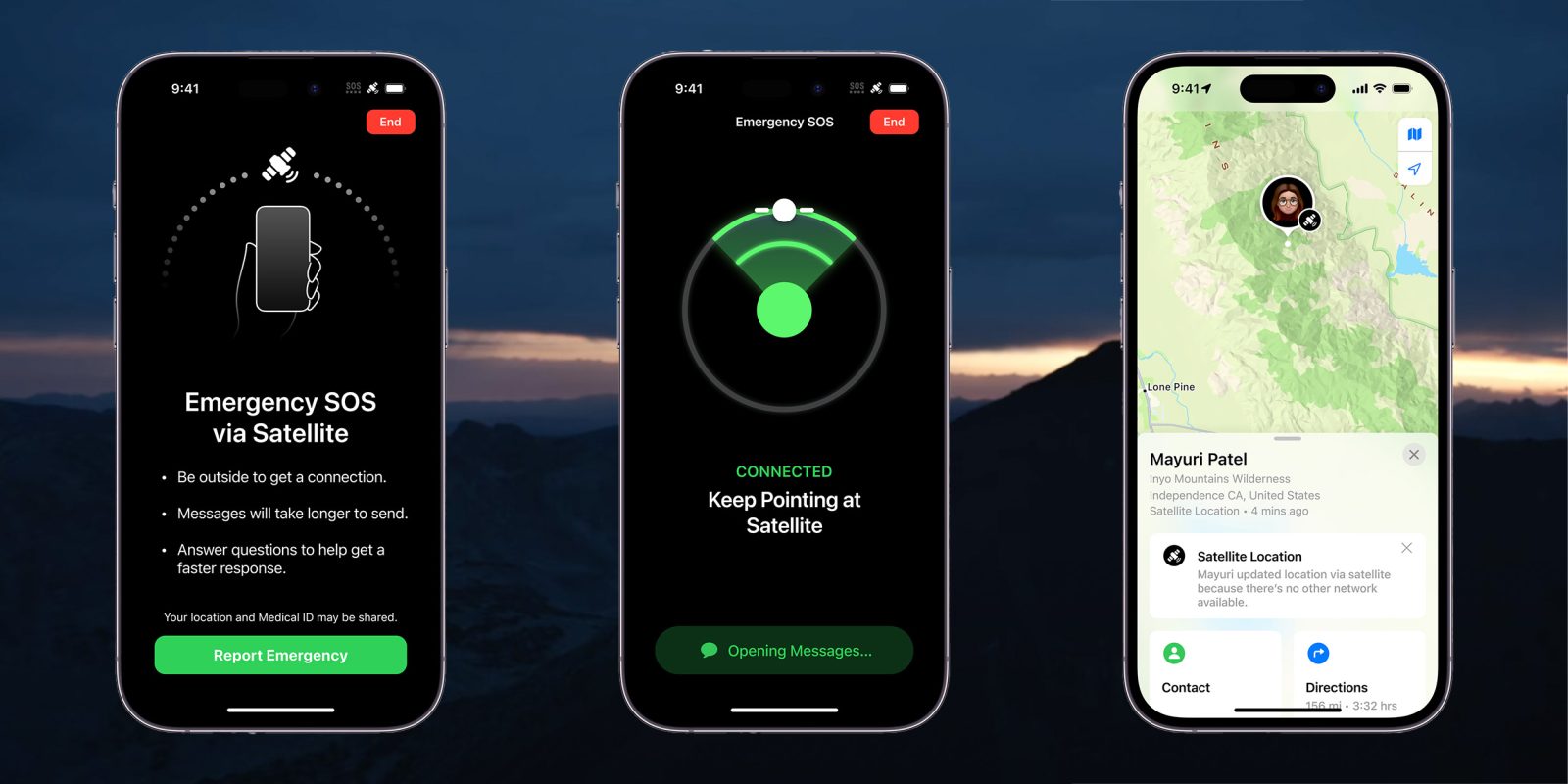
Apple today announced that the satellite connectivity features available on iPhone 14, iPhone 14 Plus, iPhone 14 Pro and iPhone 14 Pro Max, are now available to customers in Australia and New Zealand.
When outside of normal cellular network or Wi-Fi signal, customers can use Emergency SOS via satellite to send short text messages to emergency services. They can also share their location with friends and family in the Find My app.
The satellite features are now available in 14 countries: United States, United Kingdom, Austria, Belgium, Canada, France, Germany, Ireland, Italy, Luxembourg, the Netherlands, Portugal, Australia and New Zealand.
Satellite features are automatically available when an iPhone 14 is disconnected from cellular and Wi-Fi. Attempting to place an emergency call will present an option to make the phone via satellite instead, in these conditions.
The iOS interface guides the user to point their phone in a particular direction towards a satellite overhead. A clear view of the sky is usually needed to establish a satellite connection. Anyone can try this experience with a dry-run demo through iPhone settings: on an iPhone 14 device, navigate to Settings -> Emergency SOS -> scroll to the Emergency SOS via Satellite section and press ‘Try Demo’.
Data transfer with satellite network is very slow, so the iPhone interface guides the user with text prompts to send a short, optimized, message. The emergency services can reply and have a two-way conversation if needed.
When the nearby emergency services support text-based communication, Emergency SOS via satellite connects users to that channel directly. Otherwise, workers at Apple relay centers will receive the emergency messages and convey them to emergency services over the phone, on your behalf.
Apple is offering the satellite features for free for two years, starting at time of activation of the device or when the service was made available in a particular region, whichever is later. Apple has not said how much it plans to charge for the feature after the two years free period is up.
FTC: We use income earning auto affiliate links. More.




Comments